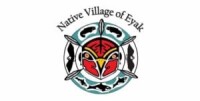About Native village of eyak
The Native Village of Eyak is a federally recognized tribe that represents four distinct Alaska Native peoples, including the Eyak, Chugach Region People, Tlingit, and Athabaskan. The tribe is committed to preserving their cultural heritage and promoting sustainable economic development in their community.
One of the primary goals of the Native Village of Eyak is to protect and preserve their ancestral lands. The tribe has a deep connection to the land and waterways that have sustained them for generations. They work closely with government agencies and other organizations to ensure that these resources are managed responsibly.
In addition to environmental stewardship, the Native Village of Eyak is also focused on promoting economic development in their community. They have established several businesses that provide employment opportunities for tribal members while also generating revenue for the tribe. These businesses include a seafood processing plant, a construction company, and a tourism operation.
The seafood processing plant is particularly important as it allows tribal members to harvest fish from nearby waters and process them locally rather than shipping them out of state for processing. This not only creates jobs but also helps support local fishermen who rely on these resources for their livelihoods.
The construction company provides services such as building maintenance and repair as well as new construction projects both within the tribal community and beyond. This business has been successful in part due to its commitment to hiring local workers whenever possible.
Finally, the tourism operation offers visitors an opportunity to experience Alaska's natural beauty while learning about native culture firsthand. Visitors can participate in guided tours led by tribal members who share stories about their history, traditions, and way of life.
Overall, the Native Village of Eyak is an inspiring example of how indigenous communities can work together to promote economic development while preserving their cultural heritage. Their commitment to sustainability serves as a model for other communities around the world facing similar challenges in balancing economic growth with environmental protection.
